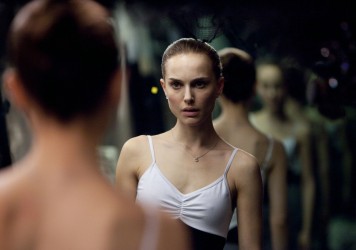
What is the greatest film score of all time? That’s a debate that has the potential to range all day, but whatever one’s answer, the relationship between music and the moving image is incontrovertible. As early as the beginning of the 20th century, filmmakers were swift to capitalise on the powerfully symbiotic relationship between visual poetry and subjective, illusory notes on a cue sheet. In the days of vaudeville and silent cinema, it was common practice for live pianists to perform live to picture before increasingly sophisticated working practices began to take hold.
Organs were installed that could mimic objective sound elements like bird songs, and a boom in cinema construction saw movie theatres equipped with specially designed orchestra pits capable of accommodating the finest classical musicians of the period. An increased emphasis on narrative-driven, feature-length drama resulted in D.W. Griffith’s controversial yet groundbreaking The Birth of a Nation (1915), whose score by Joseph Carl Breil deployed the use of the Wagnerian ‘leitmotif’ whereby specific musical motifs are assigned to particular characters and situations.
Many of the early 20th century’s most prominent comedians, including the likes of Charlie Chaplin, favoured a sense of intricate melody and harmony within their films. With the transition from silent cinema to sound pictures, or ‘talkies’, the film score was somewhat destabilised and no longer the prominent element in the sound mixture. Full synchronisation between picture, music, and sound elements would not be completely achieved until Al Jolson’s musical The Jazz Singer (1927), which showcased the newly developed Vitaphone system. Don Juan’s pioneering approach, mixing objectivity of sound effects and dialogue with the subjective emotion of music, paved the way for every movie in its wake.
Howard Shore is one of the most celebrated composers of the modern age.

Acclaimed for his work on a host of diverse genres, Shore broke new ground in fantasy scoring with his gargantuan, extraordinary The Lord of the Rings trilogy (2001-2003) for director Peter Jackson, a landmark achievement that won the composer three Oscars. Shore says that “the collaboration between sound and score can produce interesting results”. He continues: “Martin Scorsese’s Hugo (2011) benefited from Eugene Gearty setting the train station, clocks and train whistles in the same key as the score. Jonathan Demme’s The Silence of the Lambs (1991) benefited I believe from the close collaboration between music and sound editing and design by Skip Lievsay.”
That said, it would still be some years until the non-diegetic film score came of age in the early 20th century. Non-diegetic refers to music heard outside of the context of the film; diegetic means the source of the music is visible within the context of the scene. In 1933, Max Steiner delivered what was arguably the first-ever creature feature adventure score, King Kong, a leitmotif-driven extravaganza of interlocking themes and impressions. The score benefited from the recent invention of the click track, which allowed the composer to achieve infinitesimal synchronisation by listening to ‘clicks’ through headphones.
The industrial innovations, combined with Steiner’s dramatic intuition, inspired scores of talented film composers who flourished during Hollywood’s so-called ‘Golden Era’, including Erich Wolfgang Korngold, Alfred Newman, Bernard Herrmann, Franz Waxman, and Dimitri Tiomkin. Newman would invent the 20th Century Fox (now 20th Century Studios) fanfare, one of the world’s most famous musical signatures. The scores of this period began to transition from European romanticism, imported from Austria by the likes of Steiner and Korngold, to a more typically ‘American’ sound that had already been popularised in the concert hall by Aaron Copland.
Emile Mosseri is a composer whose sound mixes delicate tones, unusual intervals, and chord suspensions with lush orchestral textures. Off the back of praised works such as The Last Black Man in San Francisco (2019) and the Oscar-winning Minari (2021), Mosseri’s voice has been hailed as invigorating and distinctive.
“The main reason why a composer is hired is that they’ve composed something in the past that resonates with the director,” Mosseri explains. “It’s just your musical instincts. Everyone has something they gravitate towards. It’s going to sound like you if it comes from you. In Minari, the music was intended to float in an impressionistic way. The music is dreamlike and suggests things without using a heavy hand. Working on that film was an absolute dream.”
“The goal was to figure out what childhood memory would sound like musically. I must praise the instincts of director Lee Isaac Chung and editor Harry Yoon – they placed music where I hadn’t imagined it going. In a way, I feel like they co-scored the film. Certain pieces of music weren’t necessarily powerful on their own, but via this strategic, poetic placement, the music took on a new life. On the other hand, for a particular scene in The Last Black Man in San Francisco, we removed the music and left it dry, which, as it turns out, was the best approach. In terms of spotting, where you put music is just as important as what goes in.”
This is an extract from an essay that originally appeared in Composer magazine.
Published 7 Dec 2021

From Black Swan to High-Rise, the British composer reveals how he approaches making music for the movies.

By Paul Weedon
The experimental German composer discusses his favourite OST.

The legendary composer discusses his work on Peter Jackson’s Lord of the Rings trilogy and more.